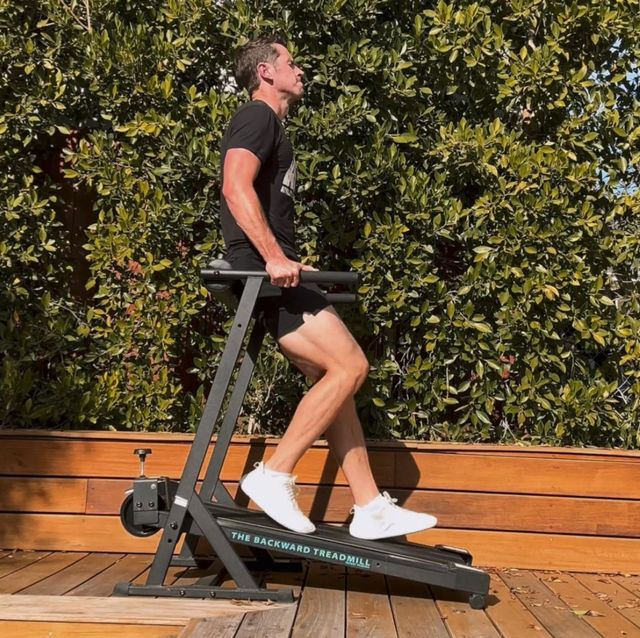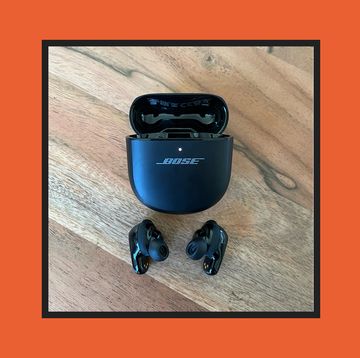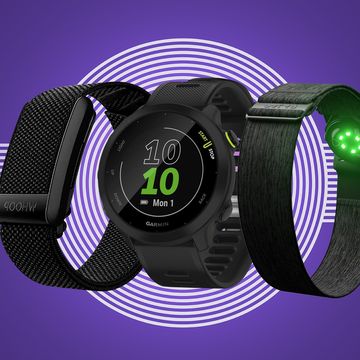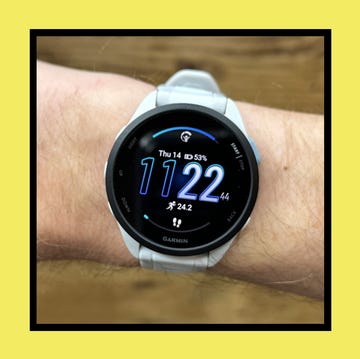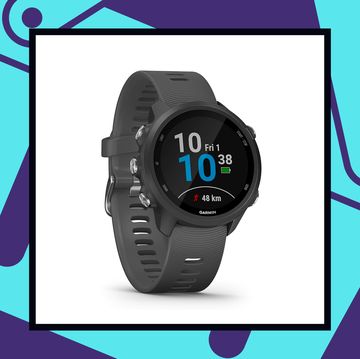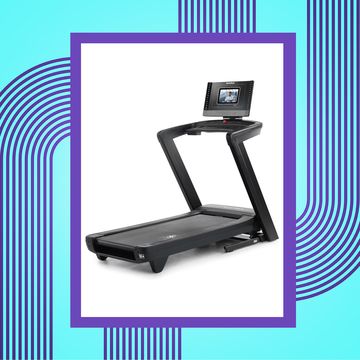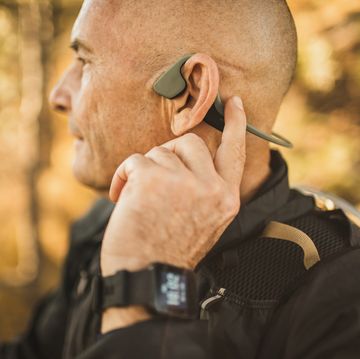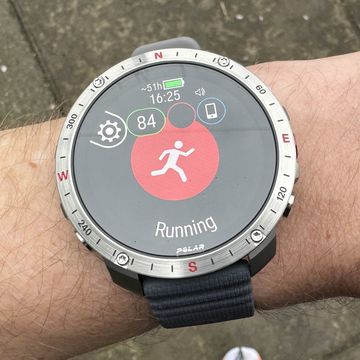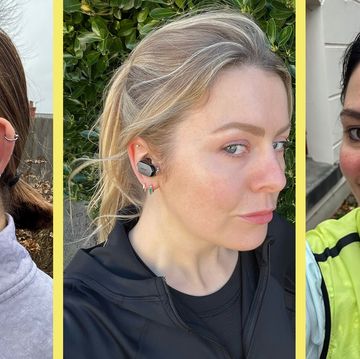If you’re looking to turn your back on treadmill running, you’re in luck. As of next month, you’ll be able to buy the world’s first treadmill designed specifically for backward movement. It’s called, fittingly enough, The Backward Treadmill.
On the surface of things, backward running is a tough sell. Harder, more hazardous and slower than its forward-facing equivalent, it invites the question: why would anyone want to run or walk backwards, anyway? The answer, according to its creator Ben Patrick, is knee health.
Patrick, who’s become an internet sensation under the moniker “Knee Over Toes Guy”, believes backward running and backward sled pulls are the injury-proofing hack your knees have been crying out for. And his army of followers – two million on Instagram and 1.3 million on YouTube – seem to agree.
The Backward Treadmill costs £480, plus taxes, and is angled at 8 degrees, so it feels like you’re going backwards up a hill. It folds down small and requires no electricity: you push the belt with your feet to create the movement. As such, it’s biomechanically more similar to the backwards sled pull than it is backward running – though the purported benefits are similar.
Keen to get an objective view on the pros and cons of backward running, RW caught up with leading running physio Tom Goom (running-physio.com).
‘We need to be careful we don’t see this [backward running] as some kind of magic bullet that’s going to prevent all injuries,’ said Goom. ‘But by the same token, there does appear to be some interesting benefits that have been reported in some of the literature.’
Backward running works the quads, calves and hamstrings quite a lot harder than forward running, and in a different way. ‘When we run forward, one of the things that makes us efficient is that the muscles and tendons behave like springs, and that propulsion doesn’t require much muscle activity,’ said Goom. ‘When we go backwards, that’s no longer the case, so you need those muscles to work harder, and that might actually improve strength.’
There’s also some evidence that backward running reduces the stress on the knee and strengthens some of the muscles, such as the quads, calves and hamstrings, that might be beneficial to people with knee pain.
But it’s not the first – or even second – thing that Goom would recommend to runners looking to avoid injury. ‘The first things to do is to look at your training. Is it at sensible level and is progressing in a gradual way? Then, if I was going to add anything in there, it would be some traditional, running-focused strength and conditioning work, which is backed by lots of evidence in terms of improving your running economy and performance.’
